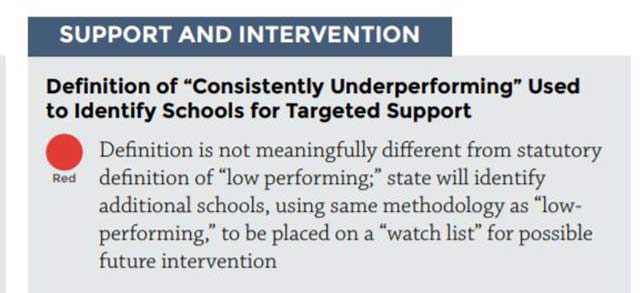States Falling Down on ESSA Subgroup Reporting
- By Dian Schaffhauser
- 10/03/18
States are "shirking" their responsibilities in two important Every Student Succeeds Act provisions, according to a new analysis by the Alliance for Education. Specifically, performance ratings on two equity-focused policies are being tucked away by states, the non-profit asserted, masking weaknesses in their accountability efforts. The Alliance advocates for high school transformation that will set every student up for success in college and life.
The Alliance maintains an "equity dashboard" for nearly every state ESSA plan to assess each state on 14 equity-focused policies in ESSA. Each policy — whether a long-time goal, accountability measure or support and intervention indicator — receives a rating of green, yellow or red by the Alliance, depending on how well the state "advances equitable educational opportunities for all students." The recent examination focused on two of those policies:
- Inclusion of student subgroup performance in school ratings; and
- How it defines "consistently underperforming," in identifying schools for targeted support.
According to the analysis, for the first indicator, 17 states received a green rating — the top one — because their school reporting shows student subgroup performance, as mandated by ESSA. An additional 35 states received yellow or red ratings, either because they don't fully comply or they're at risk for noncompliance. The 12 states that leave out student subgroups in all of their school performance data received a red rating.
For the second indicator, just six states were given a green rating for doing a good job of meaningfully defining what is meant by "consistently underperforming" in a way that could quickly identify where subgroups would need extra support. Another 30 states were "minimally compliant," according to the Alliance, which explained that "students will likely need to fail across multiple indicators before the school is identified for support." And 16 states received a red rating because they are at risk for under-identifying schools for targeted support.

By subsuming performance of traditionally underserved students into overall results, warned the Alliance, education stakeholders could get the wrong impression about the state of their schools. "A school could receive an A rating, but have a graduation rate for African American or Latino students of only 60 percent — which is hardly an A," the Alliance wrote in a recap of the results. "And in many states, low-performing students may not receive the assistance they need to excel because their schools are not identified for support."
The full equity dashboard with state links is openly available on the Alliance website, as is the Subgroup Performance analysis.
About the Author
Dian Schaffhauser is a former senior contributing editor for 1105 Media's education publications THE Journal, Campus Technology and Spaces4Learning.